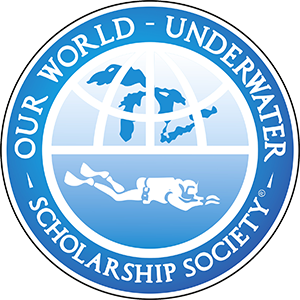One of the organisations that I wanted to work with during my scholarship was the Western Australian Museum as their Department of Maritime Archaeology (DMA) is recognised internationally as one of the leading organisations in the field of maritime archaeology. I was fortunate enough to organise a month long internship with the DMA and over this time I got to work and talk with a range of specialist staff not only maritime archaeologists but also world leading conservators. The fact that I was with the DMA for a month meant that I was able to get stuck in and really get my teeth into a number of different projects. First up we needed to go and record the remains of the Cockburn Sounds anti-submarine boom net. During WWII Freemantle Harbour was a major Allied Naval base and in order to protect the base from enemy submarine attack a 10km anti-submarine net was built. Over two days we dived and recorded all of the different components of the net including the remains of the mesh, the wooden pylons and 2 ton concrete net weights.
Our next project was to update site plans for a number of shipwrecks around Rottnest Island. The first of these was the Iron sailing barque the City of York which sank in 1899 with the loss of eleven lives. Today this wreck is a great dive in only 10 metres of water and with amazing visibility. The ship was heavily salvaged at the time of sinking but a number of major features are still readily visible such as the capstan and masts. Over two dives we managed to measure and map the wreck as well as take video and photos allowing us to put together the site plan shown below.
The next wreck we were investigating was a little bit different from most of the wrecks I have dived. In 1984 an unexpected storm caught a Korean fishing boat the Kiryo Maru off guard and before the captain could save her she was washed onto the rocks on the West of Rottnest Island ending up a total wreck. Although this wreck was very recent in archaeological terms it still made a fantastic dive with sea life of all sorts inhabiting the remains of the vessel. Much as with the City of York we dived and measured many of the wrecks features and took photos and video. One point to mention is after we got back to the museum and tidied up all our gear a helpful member of staff pointed me towards the following youtube video which was taken not far from the wreck.
One of the highlights of my scholarship year has to do with the next wreck we looked at the Iron Barque Omeo which was built in 1858 and wrecked in 1905. As a complete coincidence it turned out that my great great grandfather sailed aboard this ship in 1868 as a 9 year old when he migrated from Australia to New Zealand. Diving on this wreck was an amazing experience as I was actually working on part of my family history and it really brought the past to life for me. When I wasn’t writing reports or talking to the various staff of the museum we also visited and dived the site of the sailing barque Lady Elizabeth wrecked 1878 and the schooner Uribes wrecked in 1942. The last project that I was involved with was remote sensing of Stragglers reef using sidescan sonar. This was a great opportunity to work with some amazing equipment and let me have hands on experience with another aspect of archaeological research. I found my time with the Department of Maritime Archaeology really rewarding as I got to work with a world class maritime archaeologists, dive on some fantastic wrecks and make some great friends and I would like to finish by saying a big thanks to everyone who made it possible – CHEERS!!
















